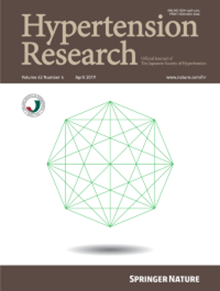DOCK1 deficiency drives placental trophoblast cell dysfunction by influencing inflammation and oxidative stress, hallmarks of preeclampsia
IF 4.3
2区 医学
Q1 PERIPHERAL VASCULAR DISEASE
引用次数: 0
Abstract
Preeclampsia (PE) is a globally prevalent obstetric disorder, pathologically characterized by abnormal placental development. Dysfunctions of angiogenesis, vasculogenesis and spiral artery remodeling are demonstrated to be involved in PE pathogenesis; however, the underlying mechanisms remain largely unknown. Here, we investigated the role of the dedicator of cytokinesis 1 (DOCK1), crucial molecule in various cellular processes, in PE progression using HTR-8 cells derived from first-trimester placental extravillous trophoblasts. Our analysis revealed an aberrant DOCK1 expression in the placental villi of PE patients and its impact on essential cellular functions for vascular network formation. A deficiency of DOCK1 in HTR-8 cells impaired the vascular network formation, exacerbated the expression of anti-angiogenic factor ENG, and reduced VEGF levels. Moreover, DOCK1 knockout amplified apoptosis, as indicated by an altered BCL2: BAX ratio and enhanced levels of cleaved PARP. DOCK1 depletion also boosted NF-κB activation and pro-inflammatory cytokine production (IL-6 and TNF-α). Furthermore, the mice treated with DOCK1 inhibitor, TBOPP, exhibited PE-like symptoms. These findings highlight the multifaceted roles of DOCK1 in the pathophysiology of PE, demonstrating that its deficiency can lead to placental dysfunction by orchestrating inflammatory responses and oxidative stress. These insights emphasize the pathogenic role of DOCK1 in PE development and suggest potential treatment strategies that require further exploration.

DOCK1 缺乏会影响炎症和氧化应激,从而导致胎盘滋养层细胞功能障碍,而炎症和氧化应激是子痫前期的特征。
子痫前期(PE)是一种全球流行的产科疾病,其病理特征是胎盘发育异常。血管生成、脉管生成和螺旋动脉重塑的功能障碍已被证实与子痫前期的发病机制有关,但其潜在的机制在很大程度上仍然未知。在此,我们利用源自初产胎盘滋养外膜滋养细胞的 HTR-8 细胞,研究了细胞分裂驱动因子 1(DOCK1)在 PE 进展过程中的作用,DOCK1 是多种细胞过程中的关键分子。我们的分析揭示了 PE 患者胎盘绒毛中 DOCK1 的异常表达及其对血管网络形成所必需的细胞功能的影响。HTR-8 细胞中 DOCK1 的缺乏会损害血管网络的形成,加剧抗血管生成因子 ENG 的表达,并降低血管内皮生长因子的水平。此外,DOCK1 基因敲除扩大了细胞凋亡,表现为 BCL2:BAX比率的改变和PARP裂解水平的提高表明了这一点。DOCK1 缺失还促进了 NF-κB 的活化和促炎细胞因子(IL-6 和 TNF-α)的产生。此外,用 DOCK1 抑制剂 TBOPP 治疗的小鼠表现出 PE 样症状。这些发现凸显了 DOCK1 在 PE 病理生理学中的多方面作用,表明 DOCK1 的缺乏可通过协调炎症反应和氧化应激导致胎盘功能障碍。这些见解强调了 DOCK1 在 PE 发病中的致病作用,并提出了潜在的治疗策略,需要进一步探索。在图表摘要中,胎盘绒毛的分割图像对比了DOCK1表达正常和减少对子痫前期的影响。左侧显示了充足的 DOCK1 水平支持健康的滋养细胞功能和有效的螺旋动脉重塑。右侧突出显示了 DOCK1 缺乏的后果,它导致滋养细胞功能障碍和螺旋动脉重塑受损,并伴有血管生成失衡、炎症增加、氧化应激和细胞凋亡,从而导致胎盘功能障碍和子痫前期的发生。
本文章由计算机程序翻译,如有差异,请以英文原文为准。
求助全文
约1分钟内获得全文
求助全文
来源期刊

Hypertension Research
医学-外周血管病
CiteScore
7.40
自引率
16.70%
发文量
249
审稿时长
3-8 weeks
期刊介绍:
Hypertension Research is the official publication of the Japanese Society of Hypertension. The journal publishes papers reporting original clinical and experimental research that contribute to the advancement of knowledge in the field of hypertension and related cardiovascular diseases. The journal publishes Review Articles, Articles, Correspondence and Comments.
 求助内容:
求助内容: 应助结果提醒方式:
应助结果提醒方式:


